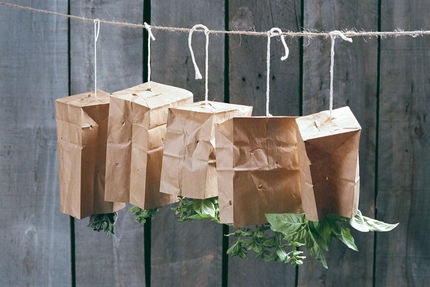How To Become More Self-Sufficient Without Starting a Full-Blown Farm…
Want to start preserving your harvest, making your own soap, or building a backyard root cellar — but not sure where to begin? “Homesteading Advice” gives you instant lifetime access to 35+ practical homesteading books on food preservation, veggie gardening, DIY natural cleaning products (save over $250 per year with this skill alone), brewing, off-grid energy, and a whole lot more…
Click Here To Check It Out Now!
“Air drying fresh herbs at the peak of their flavor preserves the flavor and color of their leaves, flowers, and seeds.
Certainly, no dried herb will have the piquancy of fresh, and a few idiosyncratic varieties, such as coriander, chervil, and frilly parsley, tend to develop off-flavors. But with planning and care, most herbs, from agrimony to zatar, can be dried with excellent results.
The thickness and water-holding capacity of each type of leaf, blossom, or seed head will determine the length of time and amount of attention needed to dry it successfully.
Small-leafed thyme, delicate borage flowers, and low-water-content rosemary need to be watched closely to ensure that they don’t become overdried. Lush, thick borage leaves and bulky dill blossoms require attention to avoid mildew or contamination by other flavors or aromas over their longer drying period…”

